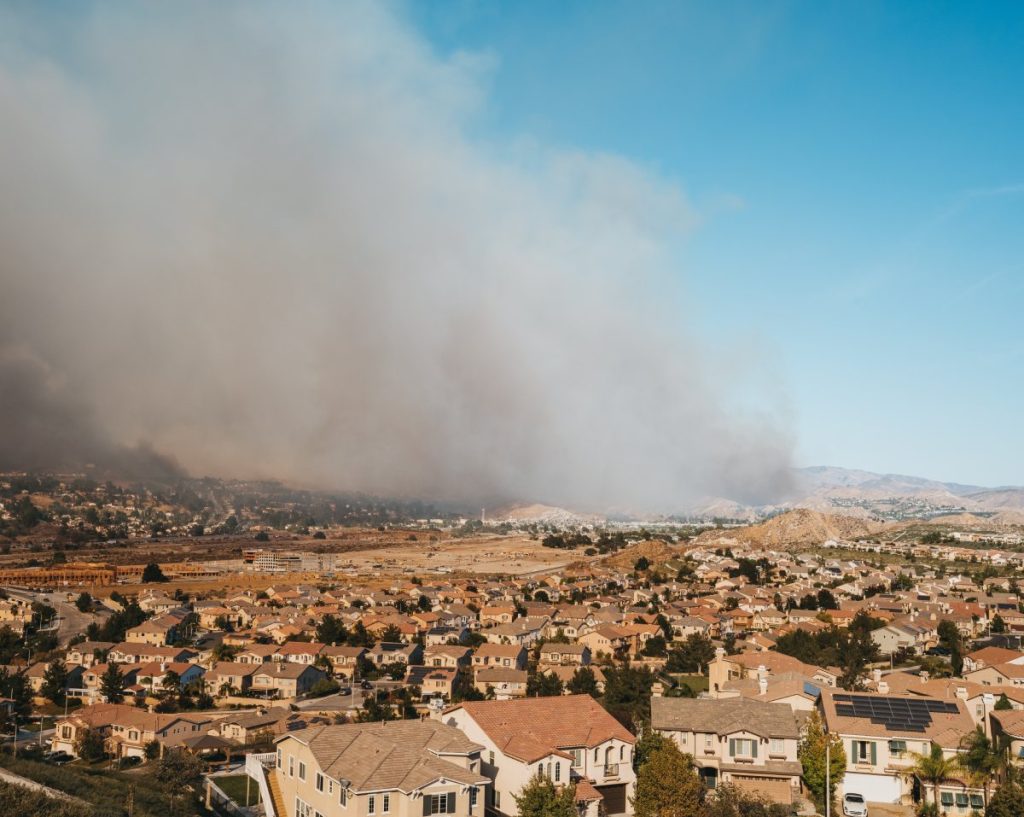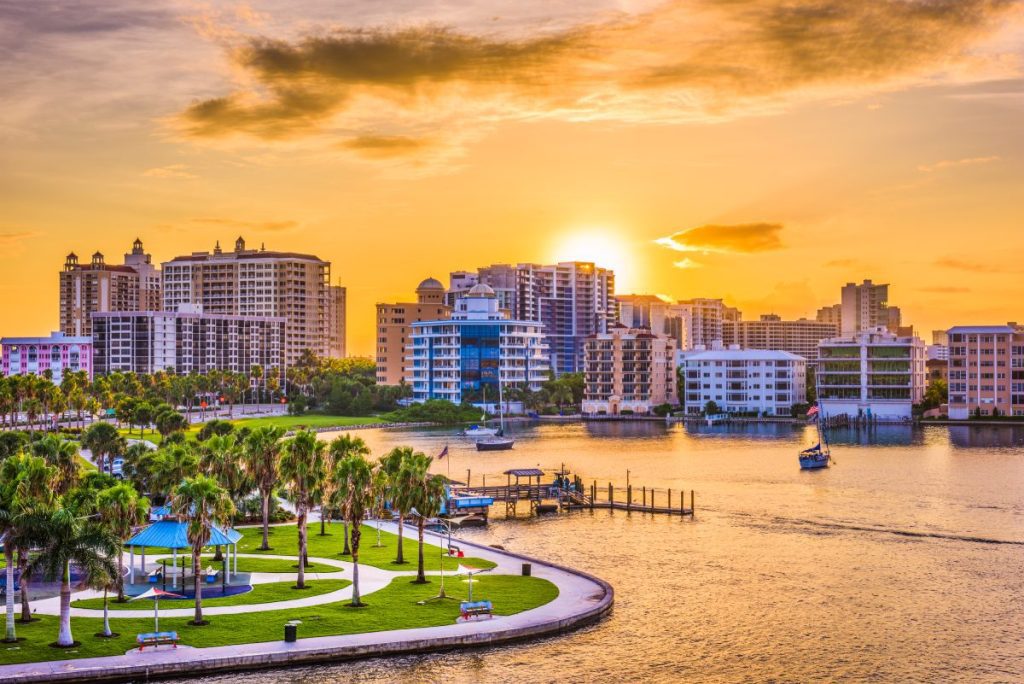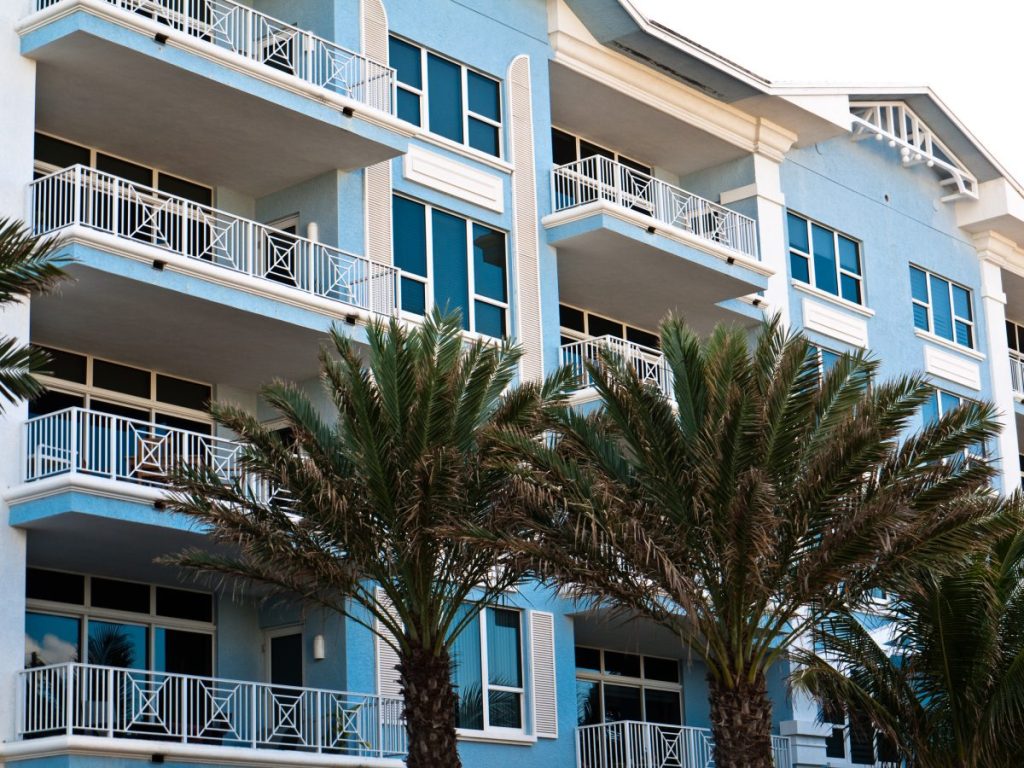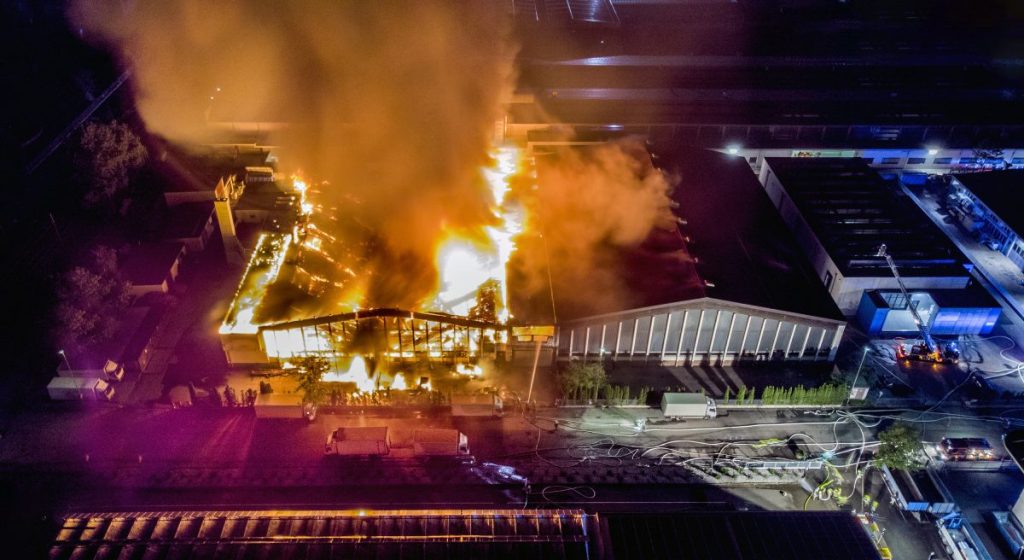Protecting Your Home and Rights After the California Wildfires
As insurance companies have been withdrawing from high-risk wildfire areas, thousands of Californians have been left scrambling for coverage. Losing fire insurance can put your home, finances, and mortgage at risk. Without adequate coverage, rebuilding after a disaster becomes nearly impossible, and many lenders also require active insurance policies to maintain a mortgage.
Insurers may claim they’re adjusting for increased wildfire risks, but that doesn’t mean their actions are always fair or legal. In this guide, we’ll:
- Examine the damage done by the January wildfires.
- Break down why insurance companies are canceling policies.
- Review the latest changes in the California fire insurance market.
- Explore steps you can take to find new coverage.
- Discuss how to protect your rights if you believe your cancellation was unjust.
The 2025 Los Angeles Wildfires
We saw 2025 open with one of the most destructive wildfire outbreaks Southern California has ever experienced. In January, a series of fast-moving blazes swept across Los Angeles County, leaving behind staggering losses. Together, these fires killed 29 people, forced tens of thousands to evacuate, and destroyed more than 12,000 structures—a devastating blow to communities already living under the constant shadow of wildfire risk.
The largest of these blazes, the Palisades Fire, ignited on January 7 and quickly consumed more than 23,700 acres, leveling neighborhoods and displacing families along the coast. The next day, the Eaton Fire tore through northern Los Angeles County, charring over 14,100 acres. Later in the month, the Hughes Fire erupted in northwest L.A. County, scorching more than 10,000 acres and triggering evacuation orders for more than 50,000 residents.
These headline-making fires were accompanied by several others that underscored the widespread danger. The Sunset Fire in Runyon Canyon darkened skies over the Hollywood Hills, while the Hurst and Kennedy Fires flared in the San Fernando Valley. Even the Woodley Fire, which burned through a local nature reserve, served as a reminder that no corner of Los Angeles was spared from the threat.
Taken together, the January 2025 wildfires marked not just a series of isolated disasters but a regional catastrophe that revealed the escalating severity of California’s wildfire season. An analysis by CoStar estimated that almost $31 billion in property value was destroyed. However, the total cost of the damages, including business disruption, healthcare, and other economic impacts, is far more significant: an estimate by AccuWeather placed the total expected damage from the Los Angeles wildfires at between $250 and $275 billion.
How California Insurance Companies Canceled Homeowners Fire Insurance Just Before the 2025 Wildfires
In March of last year, State Farm General, California’s largest home insurer, announced it was nonrenewing more than 30,000 homeowner and condominium policies throughout the state, according to the LA Times, including more than 1,600 in the Pacific Palisades and more than 2,000 in two other Los Angeles ZIP codes including the Brentwood, Calabasas, Hidden Hills, and Monte Nido neighborhoods.
And State Farm isn’t the only insurer that has been dropping policies or exiting the state’s market. Allstate stopped writing new policies in California in 2022, and Tokio Marine America Insurance Co. and its subsidiary Trans Pacific Insurance Co. pulled out of the state in 2024. Likewise, Chubb and its subsidiaries stopped writing new policies in 2021 for high-value California homes determined to have high wildfire risks.
Many Southern California homeowners have faced steep premium hikes and had to give up their policies as a result. The LA Times reports that last year, one Pacific Palisades homeowner with Farmers Insurance was told his homeowners insurance premium would jump from $4,500 to $18,000 annually.
California’s Fire Insurance Crisis
California’s fire insurance crisis has been primarily driven by the increasing frequency, size, and severity of wildfires. Between 1991 and 2015, four fires in California destroyed more than 1,000 buildings each. Since 2015, there have been 15 major fires, resulting in 174 fatalities and the destruction of over 55,500 buildings.
Some of those wildfires have been among the most destructive fires ever recorded: there were the 2017 wine country fires, the 2018 Camp Fire (which destroyed the town of Paradise and caused over $16 billion in damages), and the 2020 wildfire season, which saw what till then were five of the six largest fires in California history. These catastrophic events led to unprecedented losses, prompting major players in the insurance industry to reassess their exposure in high-risk areas.
New 2025 Fire Insurance Regulation and Policy Changes
In recent years, one of the biggest debates in the state’s insurance market has revolved around whether insurers should be allowed to use forward-looking climate models to set their rates. California’s insurance regulations—among the strictest in the country—have traditionally required insurers to base their pricing primarily on historical loss data. This means insurers could only use past wildfire losses to justify rate increases.
However, in July, the California Department of Insurance (CDI) adopted its new Sustainable Insurance Strategy (SIS), which allows insurers to use forward-looking catastrophe models (like the Verisk Wildfire Model) and include the cost of reinsurance in their rate-setting. In turn, the new reform requires these insurers to write at least 85% of their statewide market share in wildfire-distressed areas, facilitating the transition of consumers off the California FAIR Plan and expanding options in the voluntary market.
Mercury and CSAA Insurance were two of the first companies to request a 6.9% rate hike under this new strategy, justifying it as necessary to strengthen their ability to offer coverage in wildfire-distressed areas.
As for State Farm, one of the state’s largest homeowners insurers, in May 2025, California Insurance Commissioner Ricardo Lara approved an “emergency interim rate increase” that allows the company to raise rates on roughly one million homeowner policies by an average of 17%. This was in response to the over $7.6 billion in projected payouts from the January fires, a figure that nearly doubled the insurer’s previous highest single-year losses in 2017.
California Issues 1-Year Moratorium on Insurance Cancellations in Fire Areas
Governor Gavin Newsom’s emergency declaration on January 7 during the LA wildfires triggered a mandatory one-year protection against non-renewal or cancellation of residential property insurance policies in the Los Angeles County ZIP codes affected by the fires.
This means that for a year after the official emergency declaration, insurance companies can’t cancel your existing homeowners’ insurance, including fire coverage, or refuse to renew it simply because your home is in a fire-affected area. This protection is automatic for eligible homeowners; you don’t need to take any action to activate it.
Commissioner Lara also suggested a six-month hold on any pending non-renewals or cancellations issued shortly before the fires, and he encouraged insurers to be flexible with premium payments by extending grace periods.
In September 2025, an additional moratorium was issued to protect approximately 124,000 policyholders in Calaveras and Tuolumne counties following a new wildfire emergency declaration.
Areas Affected by the Moratorium
Check whether your zip code is included in the one-year moratorium at this website run by the CDI. If you have other questions about how the moratorium could affect your insurance coverage, contact the California Department of Insurance at 800-927-4357.
It’s important to understand that this moratorium doesn’t mean your insurance rates won’t eventually go up, but it does offer a crucial period of protection and allows homeowners to focus on recovery without the immediate threat of losing their coverage.
Do you have questions about how recent changes have affected your property insurance?
How to Purchase Fire Insurance
If you want to purchase or find a new home insurance policy, this guide will help you navigate the market.
1. First, Understand Your Needs
California’s wildfire risk varies significantly by location. Check your property’s wildfire hazard score using resources like Cal Fire’s Fire Hazard Severity Zones map. This will help you understand the level of coverage you might need. Also, consider your home’s age, construction materials, and proximity to vegetation. These factors influence your insurance premiums and coverage options. You should also create a detailed list of your possessions. This will be crucial when determining coverage limits and filing a claim in case of a fire.
2. Explore Your Insurance Options
Start by contacting major insurance providers. They might offer comprehensive homeowners insurance policies that include fire coverage. However, in high-risk areas, finding traditional coverage can be challenging. If you can’t find coverage in the traditional market, consider using the California FAIR Plan. It provides basic fire insurance as a last resort. It might not offer the same level of coverage as a standard policy, so if you opt for the FAIR Plan, consider adding a Difference In Coverage (DIC) policy. This can supplement the FAIR Plan coverage and provide more comprehensive protection. You might also want to explore surplus lines insurance—a specialized type of insurance for risks that traditional insurers won’t cover.
3. Shop Around and Compare
Get quotes from multiple insurers. Don’t settle for the first quote you receive. Compare policies from different companies to find the best coverage and price. Working with an insurance broker can help you access a broader range of insurance options, including those from smaller companies and surplus line insurers. They can help you find the right policy for your needs. Regardless of who you work with, pay close attention to coverage limits, deductibles, exclusions, and endorsements. Make sure you understand what is and isn’t covered by the policy.
The California FAIR Plan
Property owners who cannot obtain insurance elsewhere can turn to the California FAIR Plan, a state-mandated insurer of last resort, which offers basic coverage for properties deemed too high-risk by private insurers.
California’s FAIR Plan has received much recent attention as private insurers have canceled plans or left the market. Over the last four years, the number of dwelling policies has more than doubled from 202,897 to 451,799 statewide policies. The total exposure for those policies is $458 billion, almost triple what it was in 2020.
As new disasters strike and these dollar amounts add up, there has been growing concern about the FAIR Plan’s solvency. However, as Chip Merlin noted in this recent blog post, the FAIR Plan, unlike private insurers, is a public-oriented institution with built-in safeguards to ensure continuity of coverage. Even if its current treasury is stretched thin by wildfire claims, it has a statutory authority to assess every admitted insurance carrier in California for additional funds to cover shortfalls. This mechanism ensures strong liquidity in the event of a disaster.
What the CA Fair Plan Covers
FAIR Plan policies offer less comprehensive coverage than standard market insurance, typically only covering specifically named perils, such as fire, smoke, lightning, and internal explosions. Additional endorsements are available for windstorms, hail, or vandalism. The standard FAIR Plan homeowners policy doesn’t cover water damage or theft, it doesn’t provide liability insurance, and it only insures properties at actual cash value.
What the CA Fair Plan Costs
The average annual policy cost for the California FAIR Plan was around $3,200 in 2022, according to a statement made by a spokesman for the organization at the time. The average policy cost has likely increased since then, however, and customers insured under the FAIR plan were expected to see rates increase by more than 15% on average over the course of 2024.
2025 FAIR Plan Expansion
To help stabilize coverage during the reform implementation, the FAIR Plan was temporarily expanded in July 2025 to offer a new “high value” commercial policy with coverage up to an aggregate limit of $100 million per location for entities like homeowner associations and farms. This expansion is set to expire in 2028.
Fire Mitigation Strategies for Homeowners
Insurers are increasingly demanding evidence of risk reduction before they agree to coverage or renew policies. Below, we’ve included some practical but impactful steps homeowners can take to reduce their exposure and improve their safety.
- Create Defensible Space Around Your Home: Cut or remove dry brush, dead trees, wood piles, and overgrown shrubs within at least 30 feet of your home. In the zone out to 100 feet (or to your property line, whichever is closer), thin out dense vegetation and prune tree limbs to prevent fire from climbing into tree crowns.
- “Harden” Your Home Against Embers and Flames: A home’s exterior is its first line of defense. Replace or reinforce vulnerable components—roof, siding, decks, vents, and eaves—with fire-resistant materials (e.g., Class A fire-rated roofing, fiber-cement siding). Use ember-resistant vents, install mesh screens over openings, and keep gutters free of debris.
- Upgrade Windows, Doors & Seals: Windows and doors are common failure points. Use double-paned or tempered glass windows, metal or solid-core doors, and ensure weatherstripping is intact to help keep embers out. If insurers ask, you can present documentation of these upgrades as proof of mitigation.
- Choose Fire-Resistant Landscaping & Maintain It: Opt for fire-resistant plant species and avoid highly flammable ground covers and mulches near structures. Maintain green, irrigated lawns and use gravel or stone around the foundation lines as a firebreak. Keep trees well-spaced and remove dead leaves or underbrush regularly, particularly during the dry season.
- Ensure Water Access and Fire Suppression Readiness: If possible, install outdoor fire sprinklers (roof or yard systems) or maintain a reliable water source, such as a cistern, swimming pool, or pond, with hoses that reach all sides of the home. In many cases, insurers will favor properties with accessible water for firefighting efforts.
Turn to Merlin Law to Make Sure You’re Protected
Are you fighting an insurance company that won’t pay up on claims? With 40 years of practice and over $2 billion in recovered claims, our team stands by your side to ensure you can confidently face any insurance challenge.
FAQs About California Fire Insurance
Can You Still Get Fire Insurance in California?
You can still get fire insurance in California, but the market is shifting. While some major insurers have scaled back or stopped writing new policies in wildfire-prone areas, others are staying in the state but adopting new risk models that significantly raise premiums, especially in high-hazard zones. This means that private coverage is still available for many homeowners, but it often comes with higher costs, stricter underwriting, and mitigation requirements, such as defensible space or fire-resistant upgrades.
For those who cannot secure private insurance, the California FAIR Plan remains a last-resort option, providing basic fire coverage. However, it lacks the breadth of protection offered by standard homeowners policies.
Is the CA Fair Plan a Good Option?
The FAIR Plan is designed as a “last-resort” backstop, not a preferred choice. It provides only basic fire coverage and excludes other important protections, such as liability or theft, unless you purchase supplemental policies. While it can keep a mortgage current and provide minimum fire protection, the FAIR Plan is under significant financial strain and has limited reserves compared to the enormous wildfire risks it insures. Many homeowners who rely on it also face higher premiums and potential surcharges if the plan runs deficits. For those with no private-market options, it may be the only path to coverage, but whenever possible, pairing it with supplemental policies or securing a private insurer remains the stronger long-term solution.
What Should I Do If My Fire Insurance Is Canceled?
If your fire insurance is canceled, don’t panic—take these immediate steps to protect your home and financial security. First, contact your insurance provider to understand the reason for cancellation. Sometimes, you can reinstate your policy by addressing their concerns, such as reducing fire risks or improving your property’s safety features. Next, shop for alternative coverage with other insurers, including surplus lines carriers or the California FAIR Plan, which offers last-resort fire insurance for high-risk properties. Taking quick action can help you secure coverage before a lapse, avoiding gaps that leave you vulnerable.
Can an Insurance Company Cancel My Fire Insurance After a Claim?
Yes, an insurance company can cancel your fire insurance after a claim, but they must follow specific legal guidelines. In California, insurers are generally prohibited from canceling or refusing to renew a homeowner’s policy for at least one year after a total loss caused by a declared wildfire emergency. However, outside of this protection period, insurers may reassess their risk and decide to cancel or non-renew your policy based on repeated claims, increased wildfire risk, or failure to meet policy requirements.
You have legal options if your policy is canceled unfairly or without proper notice. Consulting a property insurance attorney can help you challenge an improper cancellation and explore alternative coverage solutions to protect your home.
Can I Get Fire Insurance If My Previous Policy Was Canceled?
You can still get fire insurance even if your previous policy was canceled, but your options may be more limited. Traditional insurers may hesitate to offer coverage if your policy was canceled due to non-payment, a high-risk location, or a history of previous claims. However, alternative options exist, such as surplus lines insurers or the California FAIR Plan. Mitigating fire risks by installing fire-resistant materials or clearing defensible space can also help you get a new policy from a private insurer.
What Are the Most Common Reasons for Fire Insurance Cancellation?
Fire insurance policies can be canceled for several reasons, often tied to increased risk or policyholder issues. One of the most common reasons is the property’s location—if it’s in a high-risk wildfire area, insurers may deem it too costly to cover. Even for minor losses, frequent claims can also trigger cancellation, as insurers may view the property as a high liability. Insurers may cite overgrown vegetation or outdated electrical systems as reasons for non-renewal. In some cases, such as those mentioned at the start of this blog, insurance companies may simply decide to reduce their exposure in certain areas, leading to widespread policy cancellations.
Do I Need Earthquake Insurance in California?
Standard homeowners insurance in California doesn’t cover earthquake damage, so if you want protection, you’ll need a separate policy or endorsement. While this form of insurance isn’t legally required, rebuilding after even a moderate earthquake can cost hundreds of thousands of dollars, so policyholders need to evaluate their risks seriously. The California Earthquake Authority (CEA) is the largest provider, though some private insurers also offer coverage.




